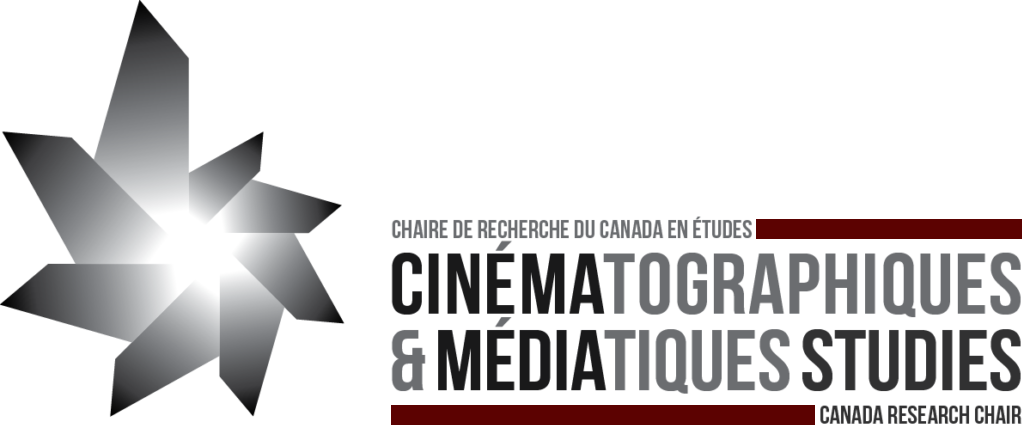
Canada Research Chair in Film and Media Studies
André Gaudreault, professor at the Université de Montréal, holds the Canada Research Chair in Film and Media Studies (2015-2022) – the first level 1 research chair ever awarded in the field of cinema studies by the Canada Research Chairs Program. Under the aegis of this Chair, he founded the Laboratoire CinéMédias in 2016.
The mission of the Canada Research Chair in Cinema and Media Studies is to interrogate the role of technological innovation in the development of cinema forms and practices, and more precisely by paying special attention to the two extremities of the historical continuum: the advent of cinema properly speaking at the turn of the twentieth century, and, a century later, the irruption of the digital into the media landscape. Since 2018, this mandate has broadened by opening up the interdisciplinary research carried out at the Laboratoire CinéMédias to the cross-fertilization of ideas and expertise through new collaborations between scholars in media studies and those working in the health sciences and in pure and applied sciences. These collaborations between cinema studies scholars and scholars in the fields of neurology, biomechanics, physics and psychology seek make it possible to conjecture and carry out experiments in the manner of the “hard” sciences.
André Gaudreault's official website

Fields of Research
The epistemology of cinema techniques and technologies
This field of research seeks to study discourses on cinema techniques and technologies as they have been formulated by institutions which convey cultural knowledge (museums, film archives, schools, magazines, libraries, etc.) by examining their evolution from the advent of cinema to the digital age.
While this field of research inevitably contributes to refining a still-fragmentary technological history of cinema, the main goal of this temporal telescoping is not to make a simplistic connection between two periods profoundly influenced by the arrival of a major new technology (photochemical cinema and digital cinema). In fact, while it is a given in research into early cinema that it is necessary to incorporate an understanding of digital media, it should not be conceived as an autonomous object but rather as a manifold object, at the intersection of several cultural series, technologies and institutions. The archaeology of media does not conceive history in binary or genealogical terms, but seeks to create new continuities by digging into often neglected sources. This field of research is thus not interested in the strictly “material” dimension of technology, but rather in this epistemological dimension, and will seek out in various forms of discourse certain recurring motifs which make it possible to account for the role of technology in the way cinema is conceived and taught and the way its history is written.
The technical question, although it was central to the earliest writers on cinema, declined in interest during cinema’s institutionalisation process, to the point of yielding to other issues such as the films themselves, their authors and film movements. Limited to the milieux of collectors and practitioners (filmmakers, editors, directors of photography, teachers, etc.), technical concerns appeared to have disappeared from scholarly discourses on cinema. It was not until the arrival of the digital that technology reappeared with force in discourses on cinema. Indeed in the wake of the digital, cameras, projectors, dissemination media, special effects and other objects have once again become worthy of investigation. What accounts for this resurgence? Can it be that technology is the epistemological category which best embodies the idea of innovation and that, in this respect, it makes it possible to give form more easily to the fears and aspirations which accompany every major change? With reference to the model of the double birth of media, do these discourses on technology play a necessary role in the new medium’s passage from its period of integration to that of its institutional autonomy? What was in the earliest discourses on the impact of cinema technologies on the formation of a disciplinary approach and on the teaching practices of this approach? In this sense, the Chair will explore discourses commenting on the impact of technology on already established cultural practices, as well as those discourses, in an apprehensive or utopian vein, which foretell their future impact.
Cinema's identity from a post-media perspective
This field of research seeks to lift the veil on the thorny question of cinema’s identity, at a time when the distinction between media is increasingly fading away. Will cinema preserve a degree of specificity even if it is increasingly invested by other media and for other ends than those for which it was known in the classical cinema era? Is the “growing digitalising of cinema” the main factor accounting for today’s upheavals? These theoretical questions require us to examine the changing role of movie theatres and the impact of new modes of distribution and dissemination associated with digital platforms, in order to juxtapose them with cinema’s so-called “classical” practices.
This investigation will focus on the most recent developments in the medium, principally with respect to the “non-film” – screenings of cultural and sporting events which take place in movie theatres – and to “non-cinema” – transmissions of films on personal digital platforms. These two categories exemplify perfectly the permeability and mobility of media content in the digital age and are at the heart of the current identity crisis. Two specific examples in particular drive this research. First, that of filmed operas – such as live broadcasts on movie screens by the New York Metropolitan Opera, an original re-appropriation of the traditional movie theatre. One of the earliest non-filmic cultural manifestations to elbow their way into multiplex cinemas, filmed operas radically altered the “base apparatus” of the movie theatre and the classical spectatorial posture. In addition, these events benefited from a significant promotional effort and extensive press coverage, facilitating their close study. Second, “mobiloscopy”, meaning viewing audiovisual content on small, portables devices, is for its part at the heart of thinking about “non-cinema”. At issue here, among other things, is the study of the consumption of films compared to the consumption of the other content offered by video streaming services (Netflix, Hulu, etc.) and evaluating how this affects our understanding of cinema as a specific medium.
This research will benefit from a number of infrastructures (online database and Encyclopaedia of Cinema Techniques and Technologies) being developed as part of the international partnership for research into cinema techniques and technologies, TECHNÈS (2015-2022). In this way we will continue to carry out the scholarly observation put in place while writing The End of Cinema? in order to identify in daily newspapers and the specialised press the latest forms of this new film genre. This time, however, our attention will be focused more on the two abovementioned topics, filmed operas and mobiloscopy. In addition to the texts identified in this way and indexed in our database, we will collect the personal stories of various professionals working in the field of disseminating digital content. The goal of these interviews is to enhance the Encyclopaedia of Cinema Techniques and Technologies with commentary coming directly from the media industry, thereby providing essential material to the secondary sources consulted.
Editing and technological change
This field of research is the logical extension of the research into cinema’s epistemology and identity, because it examines a concrete example which highlights certain key issues in the history of cinema’s technology and identity. The choice of editing is not fortuitous: it has been a research topic of major interest throughout André Gaudreault’s career. It is also a crucial concept in the way we conceive of cinema’s specificity. This field of research seeks to gauge the impact of technology on the ways in which films are segmented, fragmented and assembled, but also, by extension, to describe the connection between technology and film aesthetics and narrative structure.
Once again, a connection between early cinema and digital cinema will be attempted in order to lay the theoretical foundations of a new model for thinking about editing, one rooted in a pan-historical approach. The Chair seeks to evaluate, on the one hand, how technological advances encouraged the development of narrative editing in the first decade of the twentieth century and, on the other, the blaze of institutional editing practices in the first decade of the twenty-first century – but also to interrogate, conversely, the way in which artistic and industrial contingencies encouraged technological development. In fact technological innovation and artistic innovation are part of a process of mutual exchanges and adaptations. This is why we will examine both the technologies themselves and the technical, professional and popular discourses surrounding them in such a way as to highlight this specific dynamic.
For many years the work of André Gaudreault has contributed to clarifying the history of editing, but never from the perspective of technology. Today’s resurgence of technology as a topic of study, however, prompts a revisiting of this history by paying closer attention to the many technologies which are related or peripheral to editing. To what extent do cinema’s new apparatuses truly affect editing practices, and do they meet the needs formulated by practitioners? Similar questions arise with respect to the arrival of non-linear editing. First, in order to confirm various widespread assertions which have never been examined closely from a historical perspective, such as those which advance that narrative causality is eroding or that there is a resurgence of “attractional” techniques typical of early cinema (loops, appearance-substitution, long takes) in films edited in a non-linear manner. Second, juxtaposing the past and present will make it possible to flesh out and lend weight to the conceptual model towards which, moreover, all of the Chair’s work is directed. The entire originality of this model, in fact, resides in the connections it will make it possible to establish between the past and present history of editing.
